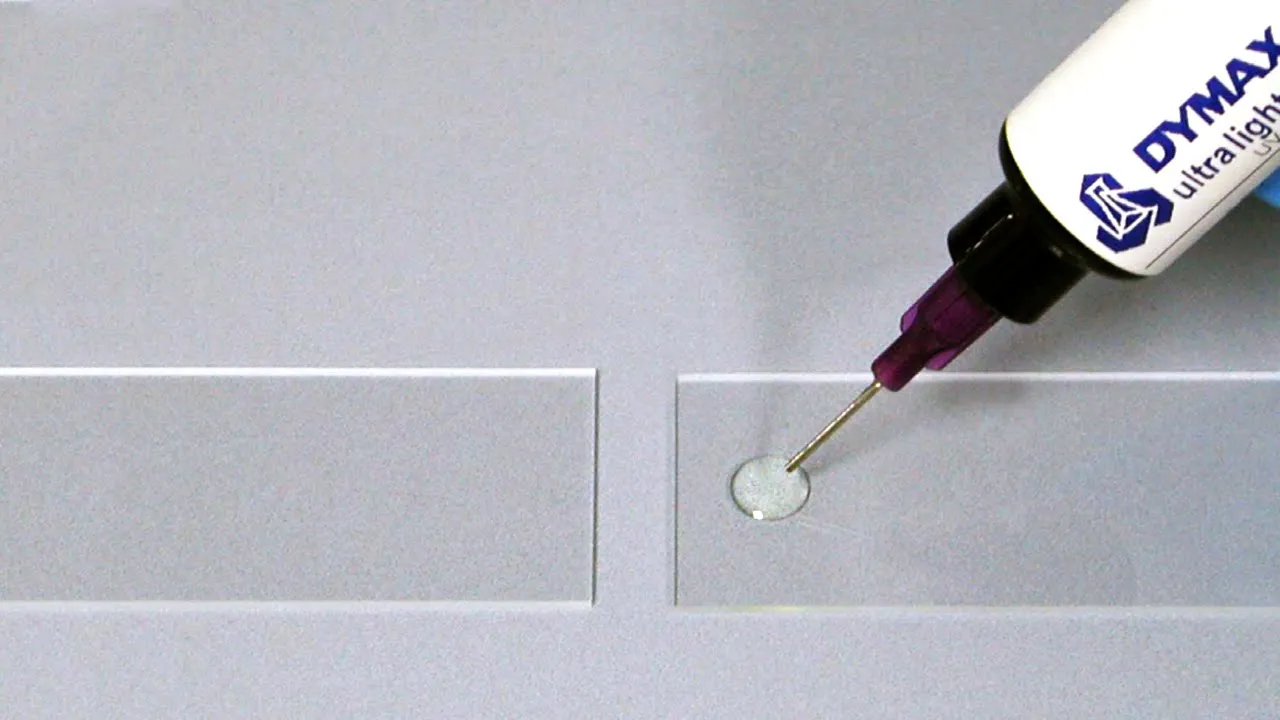Variables que pueden influir en la polimerización del adhesivo
¿Alguna vez se ha encontrado en una situación en la que necesitaba confirmar que su adhesivo estaba completamente curado antes de continuar con la aplicación? ¿Sabía cómo saber si alcanzó el curado completo? La respuesta simple es que cuando un adhesivo líquido se convierte en sólido, como resultado de la fotoiniciación, la exposición al calor o cuando se mezcla con un activador, está curado.
Existen muchas variables que influyen directa e indirectamente en la velocidad y el grado de polimerización de un adhesivo específico. Entre ellas, se incluyen las siguientes:
* El(los) sustrato(s) de la pieza
* Transmisión de luz visible/UV a través del sustrato
* Intensidad de luz visible/UV y tiempo de exposición
* Cantidad de adhesivo o activador aplicado
* Temperatura y tiempo del horno, etc.
Un fabricante que utiliza adhesivos debe desarrollar primero un proceso que produzca piezas que cumplan con todas las expectativas de rendimiento. Los conjuntos deben construirse en los extremos del proceso y probarse en los extremos de sus especificaciones de integridad. Esto se conoce a menudo como validación del proceso. Para los adhesivos curables con luz visible/UV , este trabajo puede incluir pruebas destructivas y de rendimiento de piezas fabricadas con cantidades mínimas y máximas de adhesivo, intensidad de luz visible/UV y tiempo de exposición permitido por el proceso.
Una vez que el proceso se valida y documenta, es fundamental realizar su mantenimiento para garantizar que todos los ensamblajes fabricados según el proceso, incluido el grado de curado del adhesivo UV, sean exactamente iguales. Para monitorear y mantener el proceso, los usuarios pueden emplear radiómetros que miden la transmisión de luz visible a través de plásticos transparentes y translúcidos, así como la intensidad de sistemas de fotocurado . Metros para equipo de dispensación También se pueden utilizar sensores que regulen la cantidad de adhesivo que se aplica a las piezas. Es importante recordar que la validación de la polimerización del adhesivo curable debe ser realizada por el fabricante, ya que cada diseño y proceso es único.
Además de las pruebas y el control, hay una variedad de tecnologías disponibles para ayudar a determinar si un adhesivo está completamente curado. Algunos productos en el mercado, como los adhesivos Dymax formulados con Tecnología See-Cure , permite que el adhesivo aparezca en un color distintivo en el estado no curado para permitir una fácil confirmación de la colocación del material sobre los sustratos. Tras una exposición suficiente a la energía de la luz visible/UV bajo la fuente de luz de longitud de onda adecuada, el adhesivo cambia a incoloro, lo que indica que el material se ha curado por completo. Esta tecnología de cambio de color del adhesivo fue diseñada para incorporar un margen de seguridad antes de que se produzca el cambio de color, por lo que es una excelente manera no solo de crear un proceso, sino también de tener un sistema de inspección de calidad dentro del adhesivo para indicarle si ha alcanzado la temperatura completa. curar.
¿Necesita ayuda para encontrar el tiempo de curado adecuado para su adhesivo?
Los ingenieros de aplicaciones de Dymax pueden ofrecer a los fabricantes asistencia y análisis de sus aplicaciones complejas y brindar orientación para seleccionar el adhesivo adecuado para su proceso. Comuníquese con ellos ahora.


